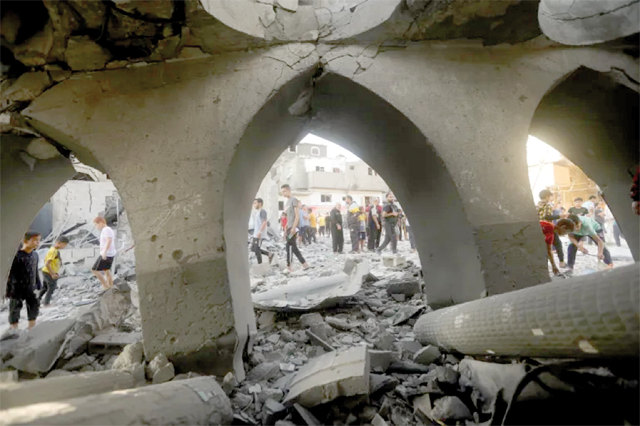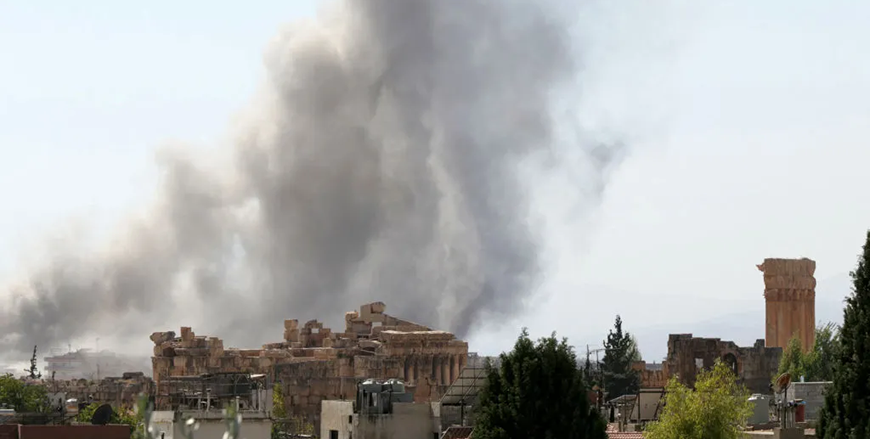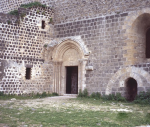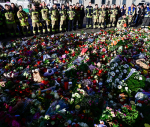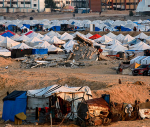You are here
Besides humanitarian catastrophe, Gaza is enduring another disaster: ‘cultural genocide’
By Sophie Constantin - Aug 04,2024 - Last updated at Aug 05,2024

Gaza City's Omari Mosque, Gaza's oldest mosque, damaged by Israeli bombardment on January 5, 2024 (AFP photo)
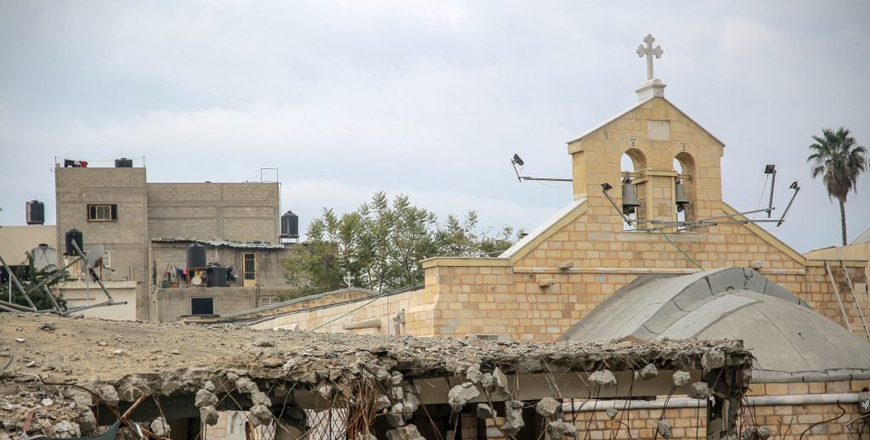
AMMAN — Amidst the incessant bombings in Gaza and the ongoing humanitarian catastrophe, another tragedy lies in the “deliberate” destruction of Palestinian cultural heritage.
Gaza, with its rich and ancient history, has been a crossroad of civilisations since the end of the Neolithic Era, when life first emerged in Palestine. Gaza has witnessed the rise and fall of many civilisations, including the ancient Egyptians, Assyrians, Persians, Greeks, and Romans.
In 2023, there were approximately 325 heritage sites in Gaza, comprising a diverse range of structures such as mosques, churches, palaces, museums, archaeological sites and cemeteries. Many of these sites have already been heavily damaged or are under serious threat from relentless bombing.
The destruction of cultural heritage by states is not a new phenomenon. It is a tactic that has been used throughout history and has occurred in many conflict zones, including primarily Iraq. While often viewed as secondary when compared to more immediate war crimes like targeting civilians or the forced displacement of populations, the destruction of cultural heritage is often intertwined with these other human rights abuses, according to International Peace Institute’s Global Observatory, an organisation that provides analysis on peace and security issues.
Damage assessment
The Arab Regional Group of ICOMOS reported that more than 200 of the 325 registered sites in Gaza considered of national or global history, archaeological, natural and religious importance have been destroyed or severely damaged. This accounts for the destruction of more than 60 per cent of Gaza’s cultural heritage.
Heritage for Peace, an international organisation dedicated to the protection of cultural heritage, released a detailed report documenting the extent of the damage to Palestinian cultural heritage in Gaza. Independent research groups, such as Forensic Architecture, which use architectural mapping to investigate state violence and human rights abuse, have also documented evidence suggesting that the destruction of these heritage sites is deliberate.
According to the Arab Regional Group of ICOMOS, among the cultural sites and monuments that have been partially or fully destroyed are the site of Tell Ajjul, the Roman Archaeological Cemetery, the site of Tell Umm Amer (which received UNESCO’s Enhanced Protection status in December 2023), the Jabalia Byzantine church, the Church of St. Porphyrius, the Grand Omari Mosque, the Pasha Palace, and many others. The destruction extends beyond tangible heritage, affecting intangible aspects as well, with museums being ravaged and journalists, intellectuals, and artists being targeted in what the ICOMOS group describes as an “attempt to erase their contributions to Gaza’s cultural and living heritage.”
Theft of artefacts
The European-Mediterranean Human Rights Monitor has expressed deep concern over reports of Israeli soldiers seizing thousands of rare artefacts in the Gaza Strip. The organisation confirmed the intentional damage caused by the Israeli forces due to videos posted on the social media account of the Director of the Israel Antiquities Authority and other reports that the Israeli army has indeed been stealing archaeological artefacts.
The theft of antiquities constitutes a war crime, according to the 1954 Hague Convention for the Protection of Cultural Property in the Event of Armed Conflict, which prohibits the seizure of antiquities during conflicts. Additionally, Article 8 of the 1998 Rome Status of the International Criminal Court classifies the looting and destruction of antiquities as war crimes.
Euro-Med Human Rights emphasises that Israel’s stealing of archaeological artefacts is a breach of international human rights law, as outlined in the Economic and Social Rights Convention, and the Convention on Civil and Political Rights, both of which Israel is a party to. “Israel is deliberately stealing artefacts from Gaza, as part of a larger plan to destroy Palestinian national and cultural identity, erase the historical connection of Gazans to their land, and destroy any evidence of their presence”, the human rights organisation said, calling on the UNESCO to fulfil its obligations by investigating the theft of thousands of artefacts and holding Israel accountable for targeting cultural sites of the strip.
Humanitarian laws
Palestinian archaeologist Salah Houdalieh explained in an independent digital media how organisations charged with the protection of cultural heritage should have intervened, but have not. He noted that international bodies have worked to protect cultural property through numerous conventions and protocols. Regretting the fact that these organisations are now silent and neglecting the situation in Gaza, he highlighted that these efforts to preserve cultural heritage began over a century ago, with the 1874 Brussels Declaration signed by 15 European nations, the 1954 Hague Convention for the Protection of Cultural property in the Event of Armed Conflict, and UNESCO’s Recommendation on International Principles Applicable to Archaeological Excavations.
Since October 7, the incessant military attacks on the Gaza Strip have violated international humanitarian and human rights law, including the 1949 Fourth Geneva Convention and the 1954 Hague Convention for the Protection of Cultural Property in Armed Conflicts, according to Euro-Med Human Rights Monitor.
The case brought by South Africa to the International Court of Justice in The Hague included claims that Israel had targeted Palestinian culture, destroyed modern museums and cultural centres, threatening Gaza’s “cultural potential”.
The ongoing destruction of cultural heritage sites can also threaten post-conflict recovery and peace building efforts. “As Israel continues its bombardment of Gaza, it is crucial to enhance the protection of Palestinian cultural heritage and ensure accountability for any violations, this is essential to protect both Palestinian lives and identity. Failing to do so risks the erasure of Palestinian culture,” stated the International Peace Institute.
Isber Sarbine, head of the NGO Heritage for Peace, highlighted in international press that the damage to religious sites will affect the social life of both Muslim and Christian communities. “The destruction of Gaza is also the destruction of their traditions, habits and their culture,” he said. As humans are the custodians of their heritage and the keepers of memory, this damage intentionally disconnects the people of Gaza from their land.
Related Articles
AMMAN – Raymond Bondin is a staunch advocate for heritage preservation with a career dedicated to safeguarding cultural sites in confl
AMMAN – Amidst the unfolding tragedy in Gaza, international organisations have released detailed reports on the deliberate destruction of Pa
AMMAN — The haunting sight of smoke columns rising behind the Temple of Jupiter in Baalbek has sparked serious concerns among heritage exper



